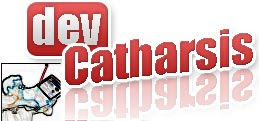Ok, after years of evangelizing VMs against dual boot I’ve re-discovered dual boot! And what’s new about it? My new eSATA external disk!
I’ve now 3 OS on my laptop (and an extra 4 virtual machines):
- A conservative Windows 7 on my internal drive
- A Windows Server 2008 R2 directly on my eSATA
- A Windows Server 2008 R2 supported on eSATA as a VHD
The later was installed the way I’m installing OSs from now on. Here’s how:
- Start installing Windows Server 2008 R2
- Start the shell (Shift-F10)
- Launch diskpart
- Create a VHD file:
- create vdisk file=”D:\Documents\Virtual Machines\VWMROMANO-DEV05\VWMROMANO-DEV05.VHD” type=fixed maximum=20000
- Attach it:
- select vdisk file=”D:\Documents\Virtual Machines\VWMROMANO-DEV05\VWMROMANO-DEV05.VHD”
- attach vdisk
- Install into your new disk :)
Here’s a simple how to.
It’s cool having a bunch of native OS on my laptop! Just think about it: the next time you want to test-drive a new beta OS, you can do it without compromising you stable workstation :)
<update>
When we already have the VHD, here’s how to registry the boot entry:
bcdedit /copy {originalguid} /d "New Windows 7 Installation"
bcdedit /set {newguid} device vhd=”[locate]\Image.vhd“
bcdedit /set {newguid} osdevice vhd=”[locate]\Image.vhd”
bcdedit /set {newguid} detecthal on
I had to look for it as EasyBCD messed up the VHD boot entry. In the same blog it states:
The advantages are magnificent:
- Simply copy one file (the .VHD file) and you’re entire system is included.
- Create incremental VHD files: One VHD file can be based on another one. So if you have different systems, create a base Win7 VHD and make all others incremental. This will save a lot of disk space!
There’re also some small disadvantages :-)
- The .VHD booted OS needs to be Windows 7, Windows Server 2008 R2 or later.
- There’s a performance decrease of about 3%.
- Hibernate and some BitLocker scenarios don’t work
(BitLocker CAN be used within the guest VHD though, but not on the disk where the VHD resides).- Windows Experience index won’t work.
</update>
<update>
Here’s another link from TechNet.
</update>

![raw[1] raw[1]](https://blogger.googleusercontent.com/img/b/R29vZ2xl/AVvXsEiLBuaxkniHhNbAOrywUXoQ3D_pYbuBEf1b2vJB3PvtUBYQcOZWU1qCTe-74zEn_js7vTKiaRFbY67tVf5J2en1ltFNog0cRn3MkgO8qSHK0sz-m2N8jkCQ4fQQjPcd85HOA0Ug/?imgmax=800)






![pt_preview_080409[1] pt_preview_080409[1]](https://blogger.googleusercontent.com/img/b/R29vZ2xl/AVvXsEii3uV7aIAnjfpIoPi4VCS5c7QTADi7tdIo3PlhVBvZKEOzUgrxu4wVf_Ajm-k2EM9UpRZZE2bNSS_3U9-315gIe89j35HZ4AYLiMwUkr4dy-8gKWfS75T_ifiPNLS4wEfvZZuc/?imgmax=800)

